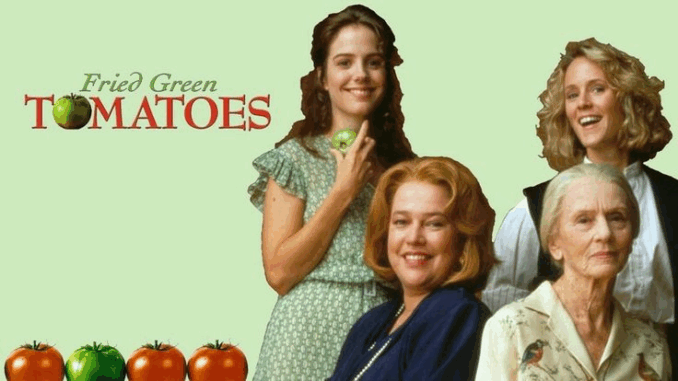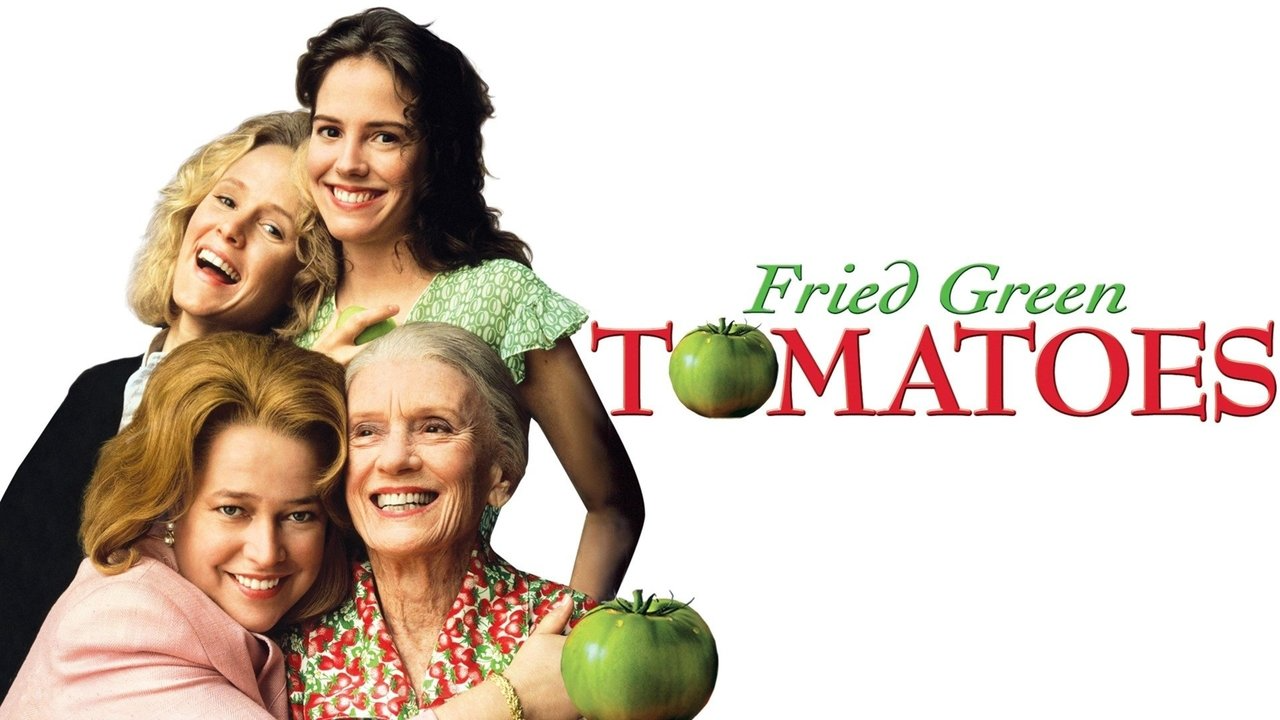
More Than Meals: Food as a Narrative Thread
At first glance, Fried Green Tomatoes might seem like a cozy, character-driven drama set in the American South. But underneath its sunlit charm and small-town quirks lies a deeper truth: food is never just food in this film. Meals are emotional markers, tools of storytelling, and quiet acts of power. Cooking becomes a form of caretaking. Eating becomes a celebration, an anchor, and a statement of survival.
Throughout the film, food is the connective tissue that binds generations, friendships, and secrets. It carries history. It feeds the soul. And in the world of Whistle Stop, Alabama, it also whispers the truths that polite society tries to forget.
The Whistle Stop Café: A Sanctuary with a Skillet
At the heart of the story is the Whistle Stop Café, where Idgie Threadgoode, Ruth Jamison, Sipsey, and Big George create more than just meals. They build a sanctuary—a place where weary travelers are welcomed, where the color line blurs (if only temporarily), and where the hungry are always fed.
The café’s food isn’t haute cuisine; it’s fried chicken, cornbread, barbecue, and, of course, fried green tomatoes. But every dish tells a story. Every serving is an act of care. People come not only to eat but to feel human again, to be seen and loved.
In the Jim Crow South, where the world outside is marked by rigid rules and injustice, the café becomes an alternate reality—a haven for the misfits, the broken, and the brave.
Cooking as Language Between Women
For the women of Fried Green Tomatoes, cooking is often the most intimate way they express love and solidarity. Idgie isn’t the type to say “I love you,” but she shows it when she brings Ruth honey from her secret beehive, or when she risks arrest to serve meals to people during the Great Depression.
Ruth, in contrast, is more traditional—but just as strong. She prepares food with care and warmth, creating a home for her son and Idgie through kitchen rituals. In their shared kitchen, Ruth and Idgie express what society will never allow them to say aloud.
Even Sipsey, the family’s matriarchal cook, uses food as her voice. When she prepares meals in the café, she isn’t just nourishing the body—she’s shaping the identity of the Threadgoode household. Her cooking is culturally Black, Southern, and maternal—offering protection, comfort, and, when necessary, fierce intervention.
The Barbecue Scene: Feeding Justice

One of the most infamous and darkly humorous moments in the film revolves around food. After Frank Bennett disappears, we later learn he was murdered by Sipsey to protect Ruth’s child. But what happens to Frank’s body is the true twist: he’s cooked and served as barbecue at the Whistle Stop Café.
It’s an audacious, almost mythic moment in the story—a fusion of justice, survival, and grotesque comedy. It flips the script on centuries of racialized violence and cannibalistic rumors aimed at Black communities. In Fried Green Tomatoes, the horror is turned on its head: the abuser becomes the meal.
And while it may be played with a wink, the symbolism is razor-sharp. Food becomes retribution, and the act of feeding the town becomes an act of inversion—justice served, quite literally, on a plate.
Fried Green Tomatoes: A Dish of Identity
No food item is more central to the film’s identity than its title dish: fried green tomatoes. Tart, crispy, and uniquely Southern, they become more than just a comfort food—they are a symbol of memory, resilience, and identity.
We see them being made in the café kitchen by Ruth and Sipsey. We see them being eaten by townsfolk, passed around like edible tokens of community. They even appear decades later, as Evelyn receives a mysterious jar of honey and pecans—another nod to the tradition of memory through food.
In essence, fried green tomatoes represent everything the film stands for: unspoken love, courage masked in gentleness, and the strength of things that endure.
Evelyn’s Transformation Through Food
In the present-day storyline, Evelyn Couch begins as a woman who has an unhealthy and guilt-ridden relationship with food. She eats in secret, binge-eats out of sadness, and uses sweets as emotional crutches. She’s been taught that her body is a problem and that food is both enemy and temptation.
But through her friendship with Ninny and the stories of the café, Evelyn begins to reclaim food as something joyful and nourishing. She learns that it’s not about shrinking herself for others, but feeding herself—literally and metaphorically—with what she truly needs.
By the end of the film, she’s cooking again, caring for others, and treating meals as gifts rather than punishments. Food becomes a bridge back to selfhood.
The Unspoken Histories in Southern Kitchens
While Fried Green Tomatoes keeps its tone warm and inviting, it never fully ignores the racial and class-based histories embedded in Southern food. Sipsey and Big George do much of the cooking, yet their contributions go uncredited in the eyes of the town. Their culinary labor keeps the café alive, but their names rarely appear in the spotlight.
Yet, the film allows space for their dignity. Sipsey, especially, emerges as a protector and moral force—her cooking not just an act of labor, but of strategy, love, and defiance. When she chooses to poison Frank Bennett, it is with the same hands she’s always used to feed and protect others.
The kitchen, in this light, becomes a battlefield, where survival and resistance are hidden in every dish.
Meals as Time Machines
In both the 1920s storyline and the present-day narrative, meals function as time machines—portals that carry characters (and viewers) between past and present. Ninny’s stories always begin with food, whether it’s the taste of barbecue or the smell of fresh-baked biscuits.
Through those sensory cues, Evelyn is transported into the world of Whistle Stop, and so are we. The kitchen table becomes a stage, and memory becomes the script. With every bite, the past is resurrected.
The message is clear: to remember someone, cook what they cooked. To honor them, feed others in their name.
Conclusion: What We Feed Each Other
In Fried Green Tomatoes, food is never just background texture. It is the language of love, the ritual of survival, and the metaphor for memory. It tells us who people are, what they cherish, and what they’ve endured.
The meals in the Whistle Stop Café nourish more than bodies—they restore identities, repair wounds, and create bonds across time. From Idgie’s rebellious bee honey to Sipsey’s silent protection, from Ruth’s comforting plates to Evelyn’s healing hands, food speaks when words cannot.
And that’s why, years after watching the film, we still remember the smell of cornbread, the sound of frying tomatoes, and the weight of stories told over a shared meal.
Because in the end, Fried Green Tomatoes reminds us of something timeless: what we cook and what we serve says who we are—and who we love.
